Episodes

Wednesday Apr 15, 2020
CCW SAFE PODCAST- EPISODE 57: ANDREW BRANCA ATTORNEY
Wednesday Apr 15, 2020
Wednesday Apr 15, 2020

Stan and Mike are joined this week by Andrew Branca from lawofselfdefense.com to discuss some self-defense law principles that are more important than ever to consider during the current situation in the country.
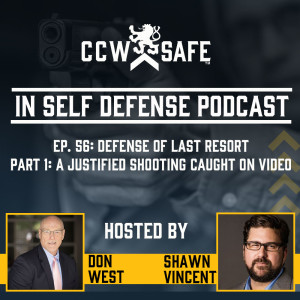
Wednesday Apr 08, 2020
Wednesday Apr 08, 2020

Don West and Shawn Vincent dissect the tragic but justified shooting of Gary Espinosa, looking at what the defender did right to avoid prosecution and what the defender could have done differently to prevent a misunderstanding from escalating to justified homicide.
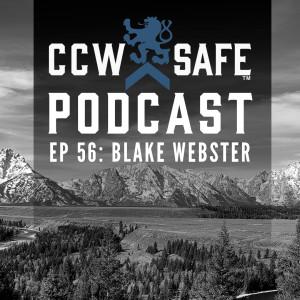
Wednesday Apr 01, 2020
CCW SAFE PODCAST- EPISODE 56: BLAKE WEBSTER OCPD
Wednesday Apr 01, 2020
Wednesday Apr 01, 2020

This week Stan and Mike talk with Blake Webster. Blake is an officer with the Oklahoma City Police Department with over 30 years experience. Blake has decades of experience on the OCPD Tac Team and currently is an instructor in firearms and tactics for the department. The guys discuss training during the COVID-19 lockdown, tell some stories and discuss the Run-Hide-Fight active shooter training program.

Wednesday Mar 25, 2020
In Self Defense - Episode 55: Enemy at the Gates Part 2: Drunken Sailor
Wednesday Mar 25, 2020
Wednesday Mar 25, 2020

It’s four in the morning and someone is angrily pounding on your front door, trying to get in. What do you do? That’s what Army veteran Greggory Farr had to decide. Don West and Shawn Vincent discuss Farr’s decision and the legal consequences.
Transcript:
Don West:
You know that surprisingly, there are plenty of those out there. Once they're on your radar and you start looking around, you see these tragic consequences coming out of people that make what may turn out to be a fatal mistake pounding on somebody's door, typically in the middle of the night, often under the influence of alcohol or sometimes, I suppose, combined with some other intoxicants of some sort. And then we had as a point that the tragic case in the Detroit, Michigan area, that Ted Wafer case, a young disoriented woman who had been in a fairly minor car accident, but clearly under the influence of alcohol and maybe some other things.
Shawn Vincent:
Marijuana.
Don West:
Yeah, and was pounding on the door, I suppose looking for help. I don't know if she was mistaken as to where she was or if she just was trying to raise anybody that could come help her, but she certainly gave all of the outward appearances to Mr. Wafer as an intruder, someone trying to break in the house.
Shawn Vincent:
Well, and it's terrifying. So you have one person who's intoxicated and disoriented and confused and someone else who's just been awoken from a deep sleep in their home in the middle of the night. And it's confusing for everybody.
Don West:
Yeah. You've got people a world apart trying to meet somewhere in the middle to exercise good judgment and make some decisions that keep everybody safe and often that just doesn't get there.
Shawn Vincent:
You got me thinking about my tone. When I talk about these things and write about these things -- and I think sometimes I can be harsh on the defender while we have our conversations. And I think it's in the same spirit that I'm harsh with my kids sometimes. It comes from love. Because I've seen so many of these cases were very good people, well-intentioned people are put, not because it's their fault -- these people came to their home drunk in the middle of the night and imposed on the security of their home, their family -- and they make a couple of mistakes, and you and I have tried to defend these people, and have successfully sometimes in court, but they make a couple of mistakes and it makes your job and our job so much harder, where if they had spent a little more time thinking about it in advance, what they're going to do in certain circumstances, they could have avoided it altogether or had been just so clearly justified that they never have to call us in the first place.
Don West:
I suppose that we're talking now how you can prepare for what may be a highly unlikely event, but at the same time if it ever happens to you and you've taken a few minutes to think it through in advance or to get some special training on how to deal with these scenarios, whether it's the parking lot scenario and somebody's walking up to you and you have to figure out whether it's an attacker or whether it's a homeless person looking for a handout or whether it's a crazy person, a potential rapist, who knows, but you've got those moments when you have to protect yourself, but at the same time hope that you can make some good decisions and that innocent lives aren't lost.
Shawn Vincent:
That's fair.
Don West:
And most importantly of course, is that you don't wind up committing a crime during that process, so that even though you firmly believe that you are doing what is absolutely necessary and lawful, reasonable people can sometimes disagree and if depending on where you are, what the jurisdiction is, who the police officer is that's investigating. Perhaps we should talk about prosecutorial discretion at some point. Maybe this is a good case that we'll get to talk about that. And you just wind up on the other side of this traumatic event in what we've called before the second fight, the next fight. The next fight. And that's when you're dealing with the criminal justice system.
Shawn Vincent:
I hate to see good people get prosecuted and sometimes go to jail for making what are entirely understandable mistakes, but mistakes that could have been avoided.
Don West:
And by that, I think the keyword is avoidance, because any time it doesn't happen, you've avoided it and your risk zero.
Shawn Vincent:
Yeah, the legal risk.
Don West:
That's what Andrew Branca talks about. No matter how legally or actions are.
Shawn Vincent:
How justified you might be.
Don West:
Yeah, the risk is not zero that something won't happen.
Shawn Vincent:
Or that you've misperceived one critical thing. And so let's go to Hawaii. There's this place called, I'm not going to say it right. EWA beach in Hawaii, I'm going to call it Ewa beach and there's a guy named Gregory Farr. He's 35-year-old army veteran. He lives there with his girlfriend and a daughter in this townhouse community, rows of townhouses. They all look-
Don West:
Kind of cookie cutter?
Shawn Vincent:
Remarkably similar to one another. So it's an April 15th a couple of years ago, tax day, and a sailor in the Navy, John Hasselbrink, Chief Petty Officer, 41 years old, was out drinking. He was reasonably responsible. He Ubered.
Don West:
If that's the case where, well one can assume he's probably a career military if he's still in.
Shawn Vincent:
At 41, yeah.
Don West:
Sure. And was living that life. And did I read it correctly that he was going to ship out the next day somewhere and that's why he was, kind of lighting it up that night?
Shawn Vincent:
I'm pretty sure. And so he lives in this town row, a couple of doors down. He usually keeps his door unlocked because you've got friends who come and go will crash on his sofa, and he's fine with that. So the Uber drops him off. The Uber's not pinpoint accuracy as it turns out, so he's a couple of doors down and he doesn't go to his front door, which he assumes is unlocked. He goes to the front door of Gregory Farr, who's asleep upstairs. Now Gregory, three days ago prior to this event, had hurt himself. He's in a cast, broke his ankle I think.
Don West:
So he's got some limited mobility.
Shawn Vincent:
He's hobbled. Right. And so now it's four in the morning, the terrible hour, four in the morning where all this stuff happens, and there's frantic pounding on the front door. This guy thinks he's at his house, he's trying to get in.
Don West:
So he probably goes to the door, turns the knob. What happens is not what he expects. He gets resistance, the door is locked.
Shawn Vincent:
Right. I think he assumes one of his buddies came in and crashed on the couch, they locked him out.
Don West:
So he pounds on the door, wakes him up and they let him in and he goes to bed and.
Shawn Vincent:
And they'd laugh about it and work off their hang overs the next late morning I imagine, but that's not what happens. Our guy Farr, he gets a rifle. The reports didn't say what kind of rifle he has, but it's a long gun and he goes downstairs and he's sort of covering the stairway that leads to the front door. There's a window there. You can see that there's a figure out there. It's someone he doesn't recognize. He calls out, wants to know who he is.
Don West:
So at this point he's making noise from the inside trying to get this guy's attention, asking him questions, but no sense of recognition or no response on the outside other than the continued. . .
Shawn Vincent:
The continuation of it. He's said that he had his girlfriend call 9-1-1. I assume she did. I haven't found any reports that prove that she did that. I haven't heard the 9-1-1 phone call in any of the news reports that I read on this, and that's what we have to go by. But let's assume that that happened ,or at least that he intended for her to call. So this goes on. So then we read at one point that he tells investigators, he thought his daughter was asleep up in bed, but I guess she's on the mattress downstairs. So she's sort of in between him now at the top of the stairs with his hobbled ankle in a cast and a rifle and this guy who's plowing away on his front door. And he fires.
Don West:
So as I understand his thinking, from what the reports seem to indicate, is that once he realizes that his daughter is essentially between him and the door, but in close proximity to the door, he's now concerned for her individual safety, not just the general safety of the family, but now he realizes that she is at high risk from this fella if he bursts in.
Shawn Vincent:
Right when he comes in, he's going to get to her first, and I'm the father and I'm injured I can't get to her quickly. That's a terrifying place to be.
Don West:
So that basically was the deciding factor from what you can tell-
Shawn Vincent:
So this guy's not responding. He's had it. And so it seems like he fired one shot this rifle through the door.
Don West:
And as far as we know, the door is still locked. There's been no progress made getting in by this intoxicated sailor.
Shawn Vincent:
That's right.
Don West:
But nonetheless, inside the homeowners are now armed, yet to some degree disabled, not as able to be physical, not as able to make some decisions in terms of his relative capacity physically with the guy outside and whether anybody would allow someone in just to fight them under these circumstances is certainly overwhelmed by the idea of a minor child at risk.
Shawn Vincent:
Right. We talk about immanence all the time, and I think he seemed content to call out and wait -- until he had a suspicion that his daughter might be at risk, and that wasn't a chance he was willing to take, so he fires and kills the guy.
Don West:
Why are so many of these cases that we talk about one shot fatalities. I've been a criminal defense lawyer for a long, long time and I've handled lots of aggravated battery cases, attempted murder cases where there's been one, two, three, five shots and nobody dies. And yet these innocent homeowner cases almost always one shot and the person on the other side dies. They're typically pretty decent people in their own right. They just made a tragic mistake of going to the wrong door and compounded of course by their level of intoxication.
Shawn Vincent:
Michael Drejka just happened to hit him in the heart. Could have hit him an inch over.
Don West:
The handicap parking place shooting.
Shawn Vincent:
Yeah, George Zimmerman. One shot.
Don West:
Yep.
Shawn Vincent:
This guy's an Army veteran. He understood how to handle a rifle and been trained to shoot. Gerald Strebendt had one shot; he was a veteran Marine sniper.
Don West:
Well, and that's, I imagine if you're going to assume that training played some part in it, even if it's through a door, that the notion is you shoot for the large part of the body, the center mass, and that's where a lot of vital organs are.
Shawn Vincent:
And if you hit it, then you hit it.
Don West:
And if you don't, you may very well not kill somebody, but if you do or you hit a place that's going to bleed out, then it just takes a few seconds.
Shawn Vincent:
So for whatever reason, often it is one shot as the case in this case. So he's eventually arrested on manslaughter charges. I'll add that the gun he had, I don't know all the details behind this, but he didn't have it legally, so he was arrested on weapons charges as well. And you and I have talked about this before in cases where those are mutually exclusive things. You can legally justifiably defend yourself with an illegal weapon and potentially be justified in the homicide but still face weapons charges for having an illegal weapon.
Don West:
That's right. That's happened surprisingly often actually where the claim of self-defense may very well be supported by the evidence and no charges are filed, but at the same time a convicted felon in possession would be a charge that some people would have to deal with or some other illegal weapon possession of some sort.
Shawn Vincent:
And we've seen people run for the scene because they knew they weren't allowed to have the gun and made their defense case much harder. And then some of the weird stuff happens, and we'll talk about, you called it lawyer nerd stuff earlier. We went and talked about some lawyer nerd stuff, but it's relevant because each one of these cases gets prosecuted or not differently, and it affects the defender's lives in myriad ways, but in this case, they arrest him, the charge him with a manslaughter, then they screw up speedy trial. They took too long, I guess, the prosecutor, to go through certain steps, and a judge dismisses it. But you made a distinction here. He dismissed it without prejudice, which meant that months later they pulled together this case and they came back and they charged him with manslaughter again.
Don West:
The initial criminal charge was dismissed on a speedy trial violation, because apparently the judge specifically allowed that the dismissal was without prejudice. In legal parlance, that typically means that a legal, a judicial action is taken typically a dismissal of some sort, but the key word is without prejudice. Without prejudice means that it's not fatal to the case and oftentimes that lawyers have, especially in a civil context, you can fix it. You can amend the pleading and file it again. So a dismissal without prejudice usually gives leave to take another run at it. Whereas frankly, that's a pretty novel concept to me in criminal law. I'm not really familiar how many states would allow a dismissal, especially on speedy trial grounds without prejudice, but clearly that's what happened here.
Had the judge dismissed it with prejudice, that typically means that's the end of it. Nobody can go back at another bite at the apple. A speedy trial is a notion that's a criminal procedure issue that originally is sort of designed at least, constitutionally, to keep people from languishing in jail waiting for their day in court.
Shawn Vincent:
You, the State, the oppressive government, you can't just arrest me on charges and then keep me in jail pending trial for 10 years, keeping me in prison without a trial.
Don West:
Without a determination of guilt. Sure. There's a provision in the United States Constitution for speedy trial in the day to day work of a criminal defense lawyer that would be known as constitutional speedy trial and that looks at a lot of factors including prejudice to the defendant for the delay and bringing the person to trial. Maybe they've lost witnesses or other evidence that they could have preserved had they then brought to trial more quickly.
Don West:
That can even sometimes exist in a far different context than what we're talking about here. But here we're talking about a state procedural rule, just like there's an overall constitutional speedy trial concept, that essentially focuses on due process and the fairness of the way that you were treated and the prejudice that you've encountered as a result of not being moved along in the system. And under state court, there might be very specific rules and it could be as hard and fast as a specific number of days. And if you're not brought to trial with any specific number of days, then the court has the authority to dismiss it. I remember in the old days, old days meaning 20, 30 years ago, that Florida had a very specific speedy trial rule for both misdemeanors and felonies, but for felonies it was 180 days. And if you were arrested and you were not brought to trial within 180 days, the court had the obligation to dismiss the case on application.
So you often would look at the calendar and figure out how many days actually where the 180th day fell and if you weren't brought to trial and jury selection started on that day, then you could file a motion with the court to dismiss it and it didn't matter if it was a bad check or a first degree murder. The judge had no discretion in that. And sometimes it gets kind of silly because the prosecutor would sometimes just count wrong and misunderstand when the 180th day was. That's changed now, it's still pretty rigid though because it's 175 days and then there's a window that the defendant must request the trial and then they've got a couple of weeks to bring the person to trial, but then it would be dismissed.
Don West:
Unlike other states, for example, well North Carolina is one where there really isn't any state speedy trial, so people can wait weeks or months to go to trial and not have any specific provision that guides that. Other States, when I talked to lawyers around the country, always seem to tell me a different story how their speedy trials worked and that's not to be confused -- I won't go on too much longer -- not to be confused with the statute of limitations. So the statute of limitations is basically how long the prosecuting authority can wait between the incident and the prosecution. That's typically measured in years. In most jurisdictions, a felony would be maybe four or five years, statute of limitations. And in some cases, cases that you and I have worked on, there is no statute of limitations on in most places for murder for example.
Shawn Vincent:
Which means there could be some defender who was involved in the self-defense incident and the police decide not the charge for some reason, but he's never explicitly exonerated, so he lives his life month after month, potentially year after year, with this specter that a prosecution could happen at some point.
Don West:
Yeah, a lot of those cases just kind of hang out there because there is no statute of limitations, the prosecutor doesn't have to finally decide and frankly there's pretty good reason in some cases, not the ones we're talking about, but we know all those cold cases, right? Technology changes. There are people that committed murder 30 years ago that are now being successfully prosecuted because of DNA and these genetic databases and things that. . .
Shawn Vincent:
The Golden Gate Killer.
Don West:
Yeah, there you go. They're able to identify people there was simply not enough reliable evidence on before.
Shawn Vincent:
I bring that up, because one of the, you talked about the next fight, right? One of the points of our discretion and our podcast is to help the members understand just what comes or what can come after a self defense shooting. And what we'd like to think is that the cops show up, they look around and say, "Oh yeah, he was trying to break into your house. Congratulations on being a great citizen. You're fine." And life goes on. But that's hardly ever the case. They're going to come, they're going to treat it as a homicide. Sometimes they clear these pretty quickly, other times they don't. And then the defender's left in this limbo for days, weeks, months, years sometimes. Usually an arrest comes within days or weeks, but not always. And then there's, depending on where you live, different speedy trial clock, your lawyer will probably opt to voluntarily to spend that to take the time they want to get the experts they need to. . .
Don West:
Yeah. In most circumstances, if there's a rigid speedy trial rule, it can be waived or told because of something that the defense wants to do to get expert review of evidence or that sort of more investigation.
Shawn Vincent:
That's why you have a year or two before you get the trial.
Don West:
Yeah. You know your point is . . . I've personally been involved in a case that's now a year and a half old and there's been no prosecution to note, no clear evidence that there ever will be, but there's been no absolute dismissal with prejudice. You know we talked about with prejudice if the case is dismissed with prejudice. . .
Shawn Vincent:
There's no deep sigh of relief for this guy.
Don West:
No, and then there's another case I'm personally involved in that is almost four years now since the incident and once again, well there's no interest apparently in prosecuting, and the longer the time passes I think the more comfort one can take that there won't be, but there's no guarantee that it won't be picked up at some point in time.
Don West:
Now this is not the kind of case where DNA and advances and forensics are likely to change the shift. It's a self-defense case and I think the facts are pretty well known and we can be confident because no charges were filed, that it was thoroughly assessed and an intelligent and informed decision was made. But no guarantee that, who knows? You know that's how, frankly, you hear cases all the time where after five years or 10 years, a suspect in a case, in the traditional typical kind of murder case where they can't prove who did it, they know it was a murder. It's clear that it was a criminal murder, but they don't know for sure who did it or the suspect. There's just not enough evidence. There'll be a statement made, there'll be new forensic evidence or something that will connect the dots and all of a sudden there.
Shawn Vincent:
There's a case. So this guy Farr, he had sort of a, the case was dismissed at one point. There are several months, then it was reasserted. The reporting kind of goes cold on this. At one point there's going to be a trial in December. I don't think that trial happens. I couldn't find any reports on it, so it was continued or the likely case of it or dismissed. But that guy spent a long time and wondering what was going to happen to him. And a lot of that has to do with some of the choices he made during this. Well, I guess there's, there's one critical choice here. If we're going to talk about the lessons learned from the case and that is he chose to fire against the intruder before the intruder had gained access to his house. This is, we were talking about the enemy at the gates.
We talked just earlier today about a guy who went out to meet an intruder in his yard. We've talked about the Ted Wafer case where he opened the door to the intruder on the porch. We talked about a similar case where a guy had two people breaking into his house. He knew who they were. He knew they were there to get them and he fired through the door and killed both of them. He was found justified probably because he knew once he got into the house, he knew what their intent was.
Don West:
And he was outnumbered and apparently the police were pretty satisfied that was good. That was true.
Shawn Vincent:
But our general advice was you probably should never shoot through a closed, locked door. We talked about a case in Cincinnati where this mother of five, her abusive ex boyfriend came, was raging on the front yard and trying to get in, and he finally pulled out the air conditioner, the window unit, and it was only then when he tried to get into the window unit that she fired and ended up wounding him and just disabling him. She was clearly justified, but it was that moment when that threshold was to be crossed. The breach had been made and Farr shoots before that moment.
Don West:
So we touched upon this in our conversation, this notion of prosecutorial discretion, the discretion that a prosecutor has in any criminal case, but I think especially in these kinds of cases. If they don't have clear marching orders from above that they always do something when these these things are present and the prosecutor's going to, after looking at the case package, you want to talk to law enforcement, they may reach out independently to talk to witnesses. They have the authority to do that. Of course, they have the benefit of the forensic reports. A lot of them the police don't have, at least not at first and they can sort of piece this together. They will scrutinize and scrutinize and dissect and turn inside and out any statement that the accused made, the shooter made, to see if it matches up with other witness statements, but I think maybe most importantly if it matches up with the physical evidence. They'll take a look at gunshot residue, trajectory. In this case they might very well look at the door jamb. Was there damage to the door jamb? What kind of door was it? Is it steel or is it thin wood that could be easily smashed down?
Shawn Vincent:
Right, in Ted Wafer they brought in the screen door that was between him and Renisha McBride to try to decide what damage was caused by her that night.
Don West:
Sure, and they can do this in the comfort of their office with the quiet and a time to reflect. Nothing like the decisions that were made of course at the scene.
Shawn Vincent:
Yeah, the life or death imminent decisions.
Don West:
They'll take a look at his statement when he said, "My daughter was there in between me and the door." And see if that really holds water. How old was she? Could he have said to her, get out of the way. Come here, go upstairs. Could he have done anything to have increased her safety before he used it as a justification for shooting through the door? He said, as I recall, that he could see the face of the sailor through the window in the door and that he was yelling at him and showed him the gun and one would think just logically, the prosecutor certainly will think this through, it's not a home invasion robbery. It's not somebody bursting into your house to hold you at gunpoint to steal things from you typically, if they bang on the door and yell and want you to come open the door. They may be crazy. They may be drunk, but it's not likely that they're part of a home invasion team.
Shawn Vincent:
If it's a home invasion robber, they'll knock and say, "Hey everybody, we're here to rob you. We're going to barge in 10 seconds."
Don West:
"Please open your door."
Shawn Vincent:
"Get ready for us. Get your shotgun ready." And yeah.
Don West:
There apparently wasn't any clear attempt to kick the door in. I'm sure that would have been mentioned if there'd been evidence to show that. So even though Mr. Farr had seconds to make these decisions, they're going to be looked at over the course of days and weeks and months, in this case a number of months. Speedy trial and then refiled. And there may be some critical evidentiary aspects. There may be some part of his story that doesn't fit some of the other known facts and they're really wrestling with how to go forward. The prosecutor has to feel bad for this guy, probably doesn't want to prosecute him. Hawaii, I don't think, necessarily, is the best state to be in when you're dealing with the. . .
Shawn Vincent:
As a defender. Yeah.
Don West:
You've got all that stuff.
Shawn Vincent:
And the fact that he didn't legally own the weapon he used -- it doesn't help.
Don West:
Does not help.
Shawn Vincent:
We talked about how they're mutually exclusive charges, but it doesn't make his judgment in the self-defense case look better.
Don West:
And the fact of who you kill really shouldn't factor in either. Every life is worth the same, I guess would be the statement. But as a practical circumstance, he killed a 41 year old Navy veteran . . .
Shawn Vincent:
Active service.
Don West:
Who was about to ship off, who was serving his country, who was just blowing off a little steam before he headed out to protect us.
Shawn Vincent:
Freedom and democracy.
Don West:
Yeah. And that's very compelling and makes it even more tragic.
Shawn Vincent:
And the victims have an influence on the prosecutors, don't they?
Don West:
Sure.
Shawn Vincent:
I mean the prosecutors make their decisions, but if it's the Navy saying, "We want you to get this guy." I'm not saying that they said that in this case, we don't know. But if it's a compelling -- the victim has somebody, an uncle in law enforcement and he has some sway -- they're sensitive. They're advocates for the victims.
Don West:
They are, and the family of the victim, frankly, as you know, it sounds kind of crude almost, but how much noise the family of the deceased makes can impact how the decisions are made and the prosecution. Are there legions of people in protests or are the family members that are really focusing the attention on this case and maybe the media attention as well?
Shawn Vincent:
You saw that in Ted Wafer too that the family was out there protesting every day until they finally filed charges.
Don West:
And I know there are some cases, you and I have been involved in them, where the prosecutor's feeling so much heat, even when they think they probably don't want to file criminal charges, they either do anyway, which is sort of succumbing to the political stuff or in a lot of jurisdictions, even when they don't have to, they'll punt and put the case before the grand jury. I've seen that several times where the prosecutor has the authority to file the charges, but they decide it's kind of a hot potato.
Shawn Vincent:
Like Ferguson.
Don West:
Sure.
Shawn Vincent:
Ferguson, Missouri where the kid shot the cop.
Don West:
Other way around.
Shawn Vincent:
Yeah, the cop shot the kid, right. I think the prosecutor wanted to null pross that, but he sent it to the grand jury.
Don West:
And the grand jury cleared, and it's still controversial. So there are those cases where the prosecutors under lots of pressure from any number of angles and that's assuming true motives. You still never know when there's a political pressure somewhere because the boss wants to get reelected or you want to run for office as a prosecutor and in a close call you may make the personal choice. Who knows. I'm not . . .
Shawn Vincent:
Suggesting that any of that's happening here, but it's funny it’s been dismissed and then reappointed.
Don West:
Yeah. But this is another one of those examples of just a tragic outcome and we spend so much time and we wring our hands. Could something have happened that would have changed the course of this, either for the homeowner, frankly, for the deceased. It was what it was. He was just drunk and out of his mind a little bit and confused. And the homeowner . . .
Shawn Vincent:
Well, we've talked before about this window of justification, that the window opens and it closes and it's only in this very specific frame work of time where use of force is justified. And we've seen cases where they fire a little bit too soon. This is one of those cases. It very well could have been 30 seconds from then the door splinters, the glass breaks, and all of a sudden now the windows open, literally opens, and then we've seen cases where like in the pharmacist's case where the perpetrator leaves and there's a final shot after the fact. Once the threat was neutralized.
Don West:
That's like the person in Oklahoma city where there are shots fired after the robber is incapacitated.
Shawn Vincent:
That's right.
Don West:
And that's clearly viewed by the prosecutor, a guy who was viewed as sort of the hero initially by the media for stopping these armed robbers, winds up getting prosecuted and convicted of murder for shooting the robber after the robber was already down.
Shawn Vincent:
Yeah. And so I think you have a case here, a guy who was almost justified and he's facing prosecution because he fired too soon. And the lesson I take from it is if I ever find myself in that circumstance, I want to be thinking about that window. If someone's calling 9-1-1, I'm thinking tactically. Where am I? There's where my daughter is. Has the window opened yet? Is that threat imminent and what would it take for that threat to be imminent? And hopefully I'll have the peace of mind, state of mind and the judgment to wait for them. But that's like I said at the beginning -- we talked about tone -- is why I get so passionate about these cases, because I can see myself there and how seconds can make the difference.
Don West:
Obviously easier said than done. You would think, well the daughter goes upstairs, he retreats further up the steps maybe with still a view of the door and the gun ready and if he comes through the door and still seems to be aggressive, maybe that's a better time. It certainly would be much more justifiable when a prosecutor is sitting in the easy chair trying to decide whether to prosecute this guy or not.
Shawn Vincent:
Yeah, tough case.
Don West:
This is one of those as so many of them we talk about that we know they're awful, they're absolutely awful, but are they lawful? And this is one that may very well be awful but lawful, but the fact that he's being prosecuted suggests that there are at least some of the authorities believed that he had other decisions he could have made, and that the decision he made to fire the gun, to take life as a consequence of it were simply not supportable under the law of self-defense.
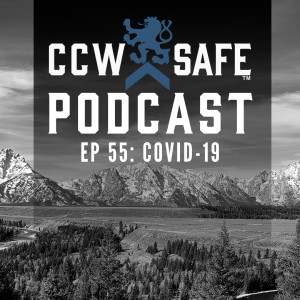
Wednesday Mar 18, 2020
CCW Safe Podcast- Episode 55: COVID-19
Wednesday Mar 18, 2020
Wednesday Mar 18, 2020

This week Mike and Stan discuss all things COVID-19. From being prepared to how to deal mentally with a stressful situation. CCW Safe Content Manager Justin Collett joins in as well.
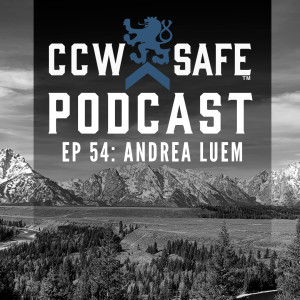
Wednesday Mar 11, 2020
CCW Safe Podcast- Episode 54: Attorney Andrea Luem
Wednesday Mar 11, 2020
Wednesday Mar 11, 2020

This week Mike and Stan interview Las Vegas, Nevada based attorney Andrea Luem. Andrea has great deal of experience with self-defense cases. She talks about what is important for a defense and things that people should consider if they are going to carry a gun for self-defense.
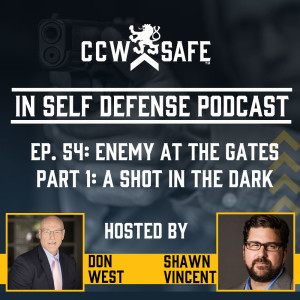
Wednesday Mar 04, 2020
In Self Defense - Episode 54: Enemy at the Gates Part 1: A Shot in the Dark
Wednesday Mar 04, 2020
Wednesday Mar 04, 2020

Don West and Shawn Vincent explore cases where homeowners defend against intruders. A Shot in the Dark focuses on the case of 72-year-old James Meyer who caught an intruder breaking into his shed. While the initial shooting may have been justified, his actions after the fact put him in a difficult legal position.
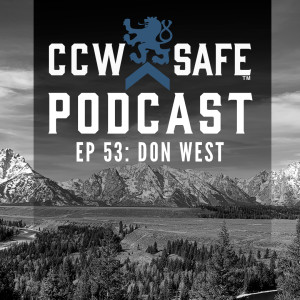
Wednesday Feb 26, 2020
CCW SAFE PODCAST- EPISODE 53: INTERVIEW WITH DON WEST NATIONAL TRIAL COUNSEL
Wednesday Feb 26, 2020
Wednesday Feb 26, 2020

This week Mike and Stan sit down with CCW Safe National Trial Counsel Don West to discuss the Amber Guyger case and what are some of the things that make a defense attorneys job harder in a self defense case.
Video version and transcript available at ccwsafe.com/news
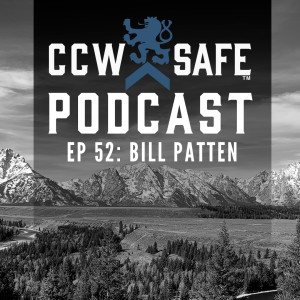
Wednesday Feb 19, 2020
CCW Safe Podcast- Episode 52: Interview with Bill Patten OKCPD Officer
Wednesday Feb 19, 2020
Wednesday Feb 19, 2020

This week Mike and Stan interview long time OKCPD Officer Bill Patten about the importance of situational awareness. Mike and Bill were partners back in the day and tell some stories of their time working the streets in Oklahoma City.
Transcript in process.

Wednesday Feb 12, 2020
CCW Safe Podcast- Episode 51: Interview with Rob High OKCPD
Wednesday Feb 12, 2020
Wednesday Feb 12, 2020

This week Stan and Mike interview Rob High of the Oklahoma City Police Department. Rob is a Use of Force expert and long time trainer for OKCPD. He discusses use of force examples, the importance of situational awareness, the 21 foot rule and other topics of interest to concealed carriers and armed professionals.

